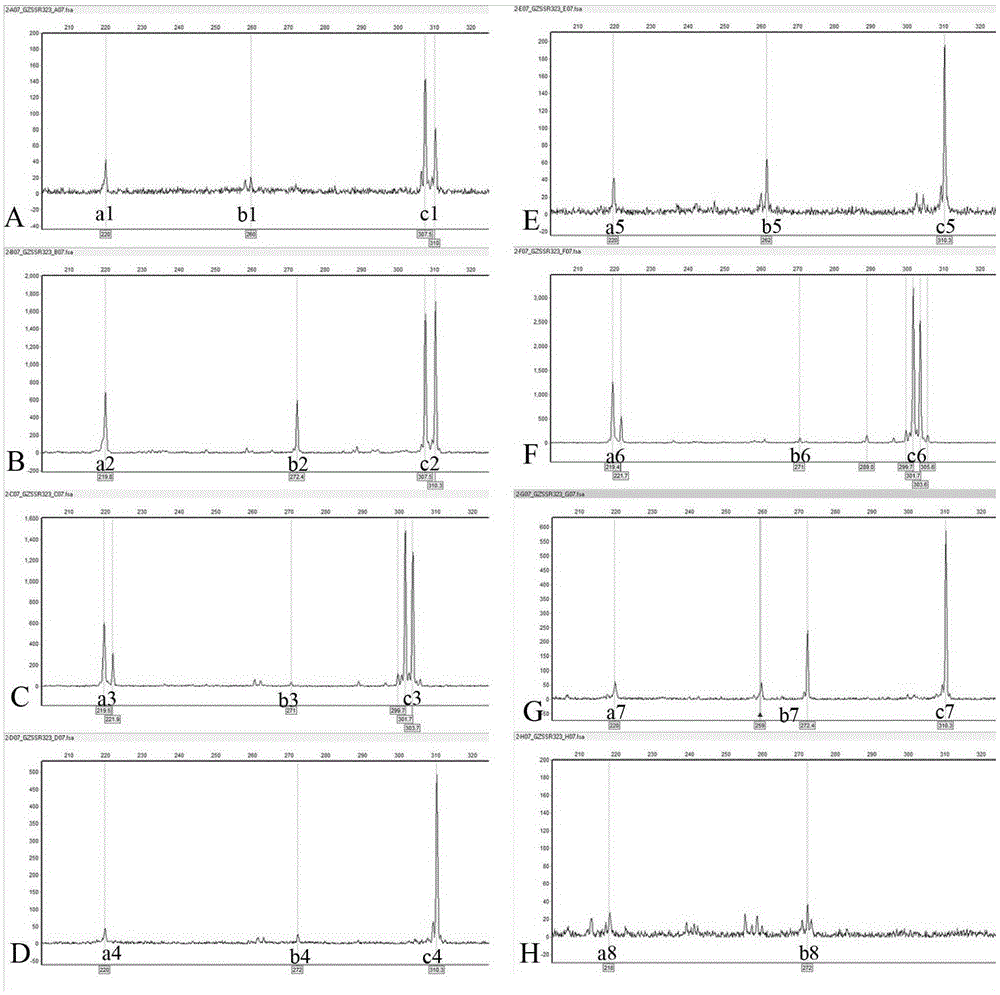Method utilizing EST-SSR marker for identification of traditional Chinese medicine serrate rabdosia herb varieties and primers
A technology of Xihuangcao and traditional Chinese medicine, which is applied in the field of molecular markers and identification of medicinal materials, can solve the problems of lack of information in the database, and achieve the effect of facilitating dry sample analysis, simple method, and high timeliness
- Summary
- Abstract
- Description
- Claims
- Application Information
AI Technical Summary
Problems solved by technology
Method used
Image
Examples
Embodiment 1
[0033] Embodiment 1 The development of the EST-SSR core primer set based on the transcriptome sequence of Xihuangcao
[0034] 1. Construct the transcriptome information database of Xihuangcao and Xianwen Xiangchacai
[0035] The same amount of roots, stems, leaves, and flowers of Xihuangcao and Xianwen Xiangchacai were collected in the medicine garden of Guangdong Provincial Institute of Traditional Chinese Medicine. After mixing, RNA was extracted and sequenced. After obtaining massive data, use the GO classification (GeneOntology) method to compare all spliced unigenes with the NCBI non-redundant protein database, remove redundant sequences, and set the E-value to 10 -6 . The annotation information of uinigenes of all non-redundant sequences was then extracted using Blast2GO software. Finally, all unigenes with non-redundant sequences were functionally classified (by molecular function, cellular components, biological process, metabolic process, etc.) with the online sof...
Embodiment 2
[0063] Example 2 Utilize EST-SSR markers to identify the species of Chinese medicine Xihuangcao
[0064] 1. DNA extraction
[0065] Use the improved CTAB method to extract the DNA from the leaves of the above 8 genuine and counterfeit plants of Xihuangcao. After quantification by ultraviolet spectrophotometer, dilute to 50ng / μl, and store at 4°C or -20°C until use;
[0066] Concrete steps are with embodiment 1.
[0067] 2. PCR amplification
[0068] Using the DNA extracted in step 1 as a template, the 24 pairs of EST-SSR core primers developed in Example 1 were used for PCR amplification. The amplification method was the same as in Example 1, and amplified products with different lengths and different fluorescences were obtained.
[0069] 3. Detection and analysis
[0070] PCR products of different lengths and different fluorescences were mixed in equal proportions, capillary electrophoresis and typing were carried out with a 3730xl DNA sequencer (ABI, USA), and then the ba...
PUM
 Login to View More
Login to View More Abstract
Description
Claims
Application Information
 Login to View More
Login to View More - R&D
- Intellectual Property
- Life Sciences
- Materials
- Tech Scout
- Unparalleled Data Quality
- Higher Quality Content
- 60% Fewer Hallucinations
Browse by: Latest US Patents, China's latest patents, Technical Efficacy Thesaurus, Application Domain, Technology Topic, Popular Technical Reports.
© 2025 PatSnap. All rights reserved.Legal|Privacy policy|Modern Slavery Act Transparency Statement|Sitemap|About US| Contact US: help@patsnap.com



